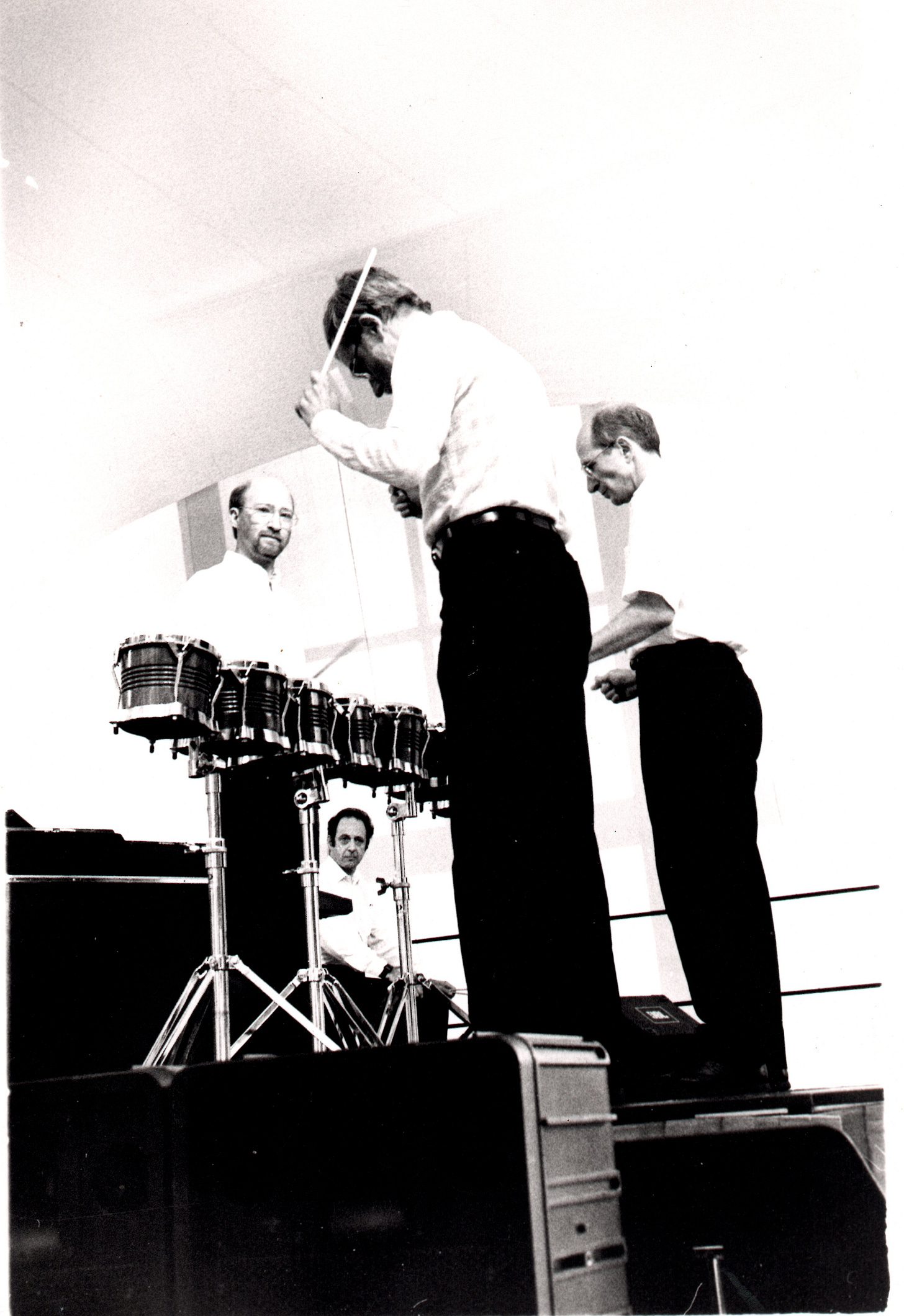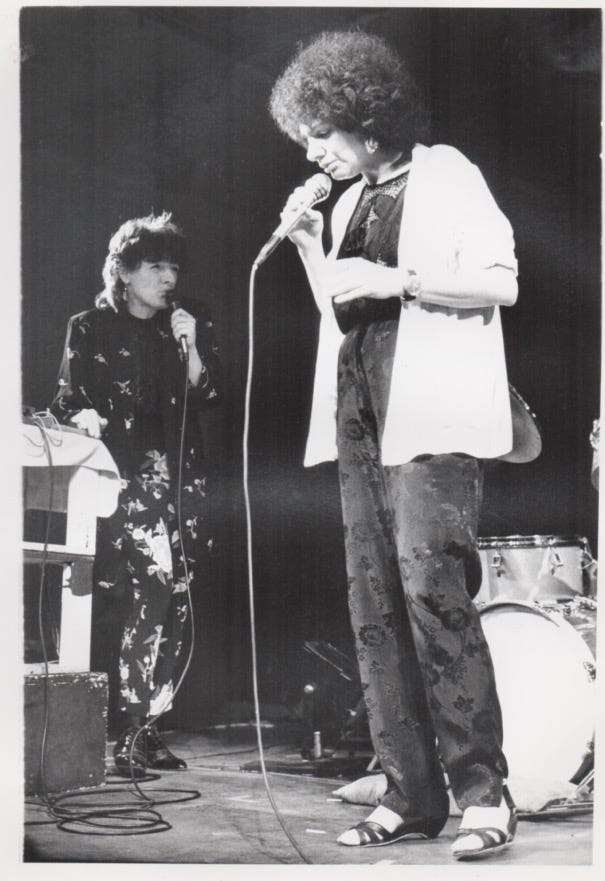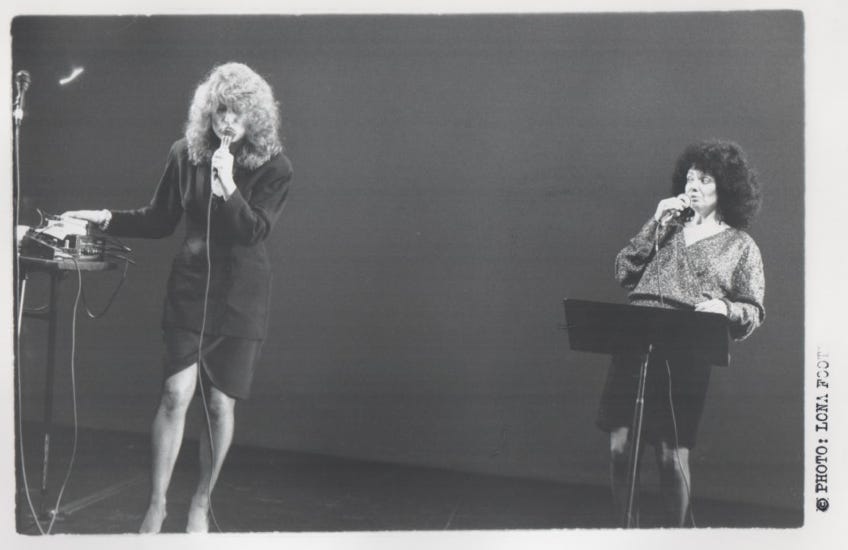Phill Niblock and Jay Clayton, Lona Foote photos
Two recently deceased masterful yet modest musicians I was fortunate to know
Phill Niblock, credited in his New York Times obituary as “a leading light in the world of experimental music,” was one of the first and most welcoming artists I met when I arrived pennyless in NYC in 1982. “No bs,” was Phill’s motto about the work he created and presented at his Experimental Intermedia loft live-work space in
Manhattan’s Soho. That meant he didn’t go in for such frou-frou as melody, rhythm, editing, or other common manipulations of tonal and visual material. He was also without pretense or ego display, dryly hilarious, acutely observant and encouraging. I met him through photographer Lona Foote, a come-and-go EI assistant. Lona made the brilliant image above, showing herself with the camera, Phill in checkered shirt, his son Jasper over his shoulder, Phill’s companion (maybe Katherine Liberovskaya?) at frame left, and I don’t know who in the picture-in-picture, looking at a picture.
Two or three things I remember about Phill: He’d taken photos of Duke Ellington’s orchestra in a recording studio in the early ‘60s, and often asked me to identify some of the players in his prints, though I never could recognize any of them (they were from before my time). Phill was a big fan of Dashiell Hammett and had an original paperback edition of Continental Op stories I’ve never read, illustrated with a map of their San Francisco settings. Phill directed “The Magic Sun.” an abstract yet straightforward film in closeup of Sun Ra’s Arkestra. Of his music, I recall once
snorting at a seemingly interminable and contrived Bang on a Can performance of a chamber orchestra work by Louie Andreissen, to be relieved, enlightened and inspired by the next piece on the program, a uniquely luminescent drone by Niblock with a pointillistic timbre that glistened as with solar warmth. I have no idea how he did it. Phill was a total mensch, greatly supportive of many.
Singer Jay Clayton (NYT obit) was another genuine, multi-dimensional artist I met on an early visit to NYC and followed thereafter.
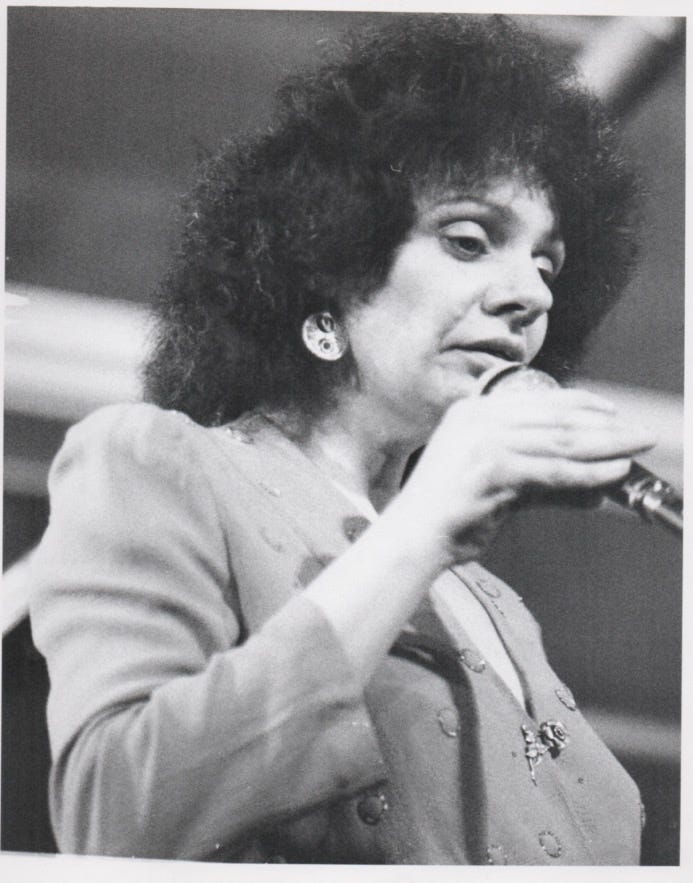
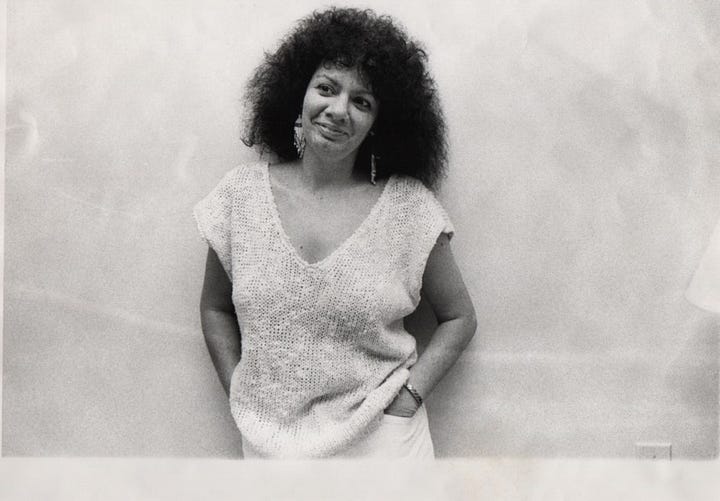
Coming to the City from Syracuse with a 20-year-old’s snobbery, I called the Jazz Hotline, which WKCR updated daily for phone accessibility and was disappointed in the weekend’s offerins. I was able to reach a human behind the servce, and explained I was in town briefly and had heard everyone in the clubs already. Was there anything else? The human answered, “Well, a composer, Steve Reich is having a rehearsal downtown. Here’s his number — if you call, maybe he’ll let you attend.”
I did so, Reich himself answered, said if I kept quiet here was his loft address on Broadway near Canal, they’d start around 8. I went and sat on the side. As I recall the composer warmed up with a partner playing “Clapping Music” for themselves.
There were some run-throughs of section parts, then two semi-complete unfoldings of a luscious composition for the ensemble, I recall, with marimba and vocalists in harmonious swells and counter-phasing. Hearing it up close — twice! — was a high, and having met Reich helped me years later get him to my Chicago apt. for a DownBeat Blindfold Test.
Clayton was one vocalist, the other, probably Joan LaBarbara. I knew her name already from a stunning performance on “Pantomime of Fear” from cornetist-flutist-
composer Marc Levin’s album Songs Dances and Prayers (with Calo Scott and Tom Moore, celli; Billy Hart, drums; Brian Ross, tenor saxophone; Balakrishna, sitar, and Frank Clayton, bass — long obscure, a collector’s item, now reissued on Bandcamp). If that sounds today like a squall with unleashed sax, clashing strings, propulsion, and a climax of high-keening Clayton articulating nervous breakdown and social collapse over the bass stride played by her husband, father of her children . . well there’s more to the album than just that.
I hear in Clayton’s vocal a late ‘60s version of the trained and unlimited, folk-jazz-blues-talk-aria-rock inflected NYC singing style of Sheila Jordan before Clayton, Jeanne Lee and Ellen Christie, Shelly Hirsch, I have to add my ex-Kitty Brazelton, oh yeah Laura Nyro and Patti Smith, for gosh sakes, Annie Ross, many others.
She had an instinct for community participation, and instituted “Vocal Summits” with like-minded singers. Loose improv sessions they were, using common or customary material, not necessarily song-oriented. She established an ongoing collaboration with Urszula Dudziak, who processed her vocalizing electronically, and another with
pianist Kirk Nurock. She taught in NYC and later at Cornish Institute in Seattle, forming a lyrical quartet with other key improviser of the northwest — Julian Priester, Jerry Granelli and Gary Peacock.
Jay brought welcome warmth to John Cage’s “A Flower” and “Forever and Sunsmell” in recording with the Donald Knaack Percussion Ensemble (Tomato Records). Ican’t pick out her specific voice on Steve Reich’s recordings, but she clearly contributes to their beauty. I believe I heard her in an ensemble performing Reich works at Alice Tully Hall — ah memories. Enthralling. I frequently ran into Jay Clayton at NYC musical events, always a pleasure. Here she is, singing with her daughter:


